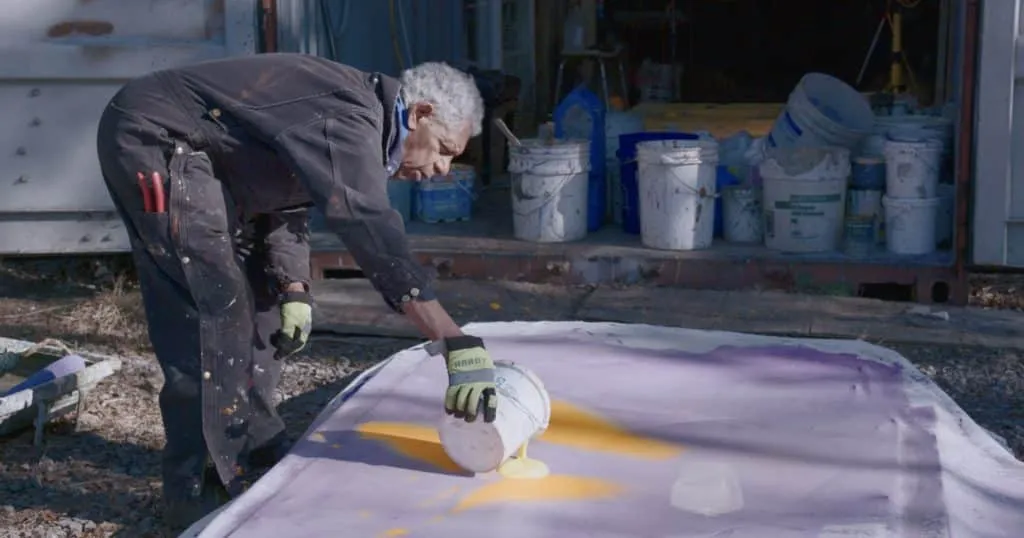
Slamdance Film Review: With Peter Bradley
Slamdance
With Peter Bradley
Director: Alex Rappoport
Abstract artist Peter Bradley has had an extraordinary life. From his humble beginning with his foster mom in Pennsylvania to brushing shoulders with some of the biggest names in entertainment and becoming one of the most unique modern abstract artists and still working today at age 82. Until recently, he hadn’t sold a painting or been invited to an art exhibit in over 40 years, despite painting and working every single day. In With Peter Bradley, cinematographer turned director Alex Rappoport journeys to Bradley’s residence to uncover how such a prolific artist with an interesting process and a unique eye for art ended up in obscurity.
Bradley explains to Rappoport that art is a battle for him, but if he’s got paint, he’s going to win that battle every time. Bradley has long been winning that battle by the bucketful as he splashes numerous colors onto his large, damp canvases. Bradley’s medium isn’t a watercolor in the traditional sense, but he uses various types of water works—his garden hose, rain, snow and more—to dispel the colors on his canvases. Rappoport beautifully photographs Bradley’s processes of dousing the canvas then dumping paint on it then spraying the canvas again with the hose. Skeptics might say that dumping paint on a wet canvas isn’t artistic, but Rappoport finds a way to make Bradley’s process just as interesting as the final outcomes.
While he works, Bradley blasts various tunes from his extensive jazz collection, an easy analog to the impromptu rhythms and beats of his visual art style. Rappoport smartly pairs the montages of Bradley’s work with an equally excellent, original jazz score by the Javon Jackson Quintet, giving the film a layered, improvised feel of music and visuals.
Rappoport could have made this documentary about how the racism Bradley faced in the art scene pushed him out of his position of influence—an easy angle with which to approach an aging Black artist who hasn’t been in the spotlight in decades. But like Bradley, who isn’t interested in painting politically, Rappoport focuses on the art and Bradley’s process of creating art. Unlike his art style, Bradley’s reflection of his life is terse and obvious. He isn’t shy about recounting his experiences living as a Black man in the ’60s, ’70s and ’80s and the racism he faced. He also doesn’t let his art overly reflect his experiences and corrupt his artistic vision. His frank demeanor about his life and the hardships he faced provides an engaging look at the art scene of the time and the people he knew and engaged with, as well as where it led him after his career faltered.
I have looked at abstract paintings throughout my life and thought, “Well I could do that!” and With Peter Bradley doesn’t prove that I couldn’t do what the renowned abstract artist does. Instead, Rappoport focuses on what’s important both to Bradley and to the audience–the art. Rappoport captures Bradley’s process on film the same way Bradley’s eye captures the ever changing drips of paint with effortless improvisation and the desire to keep going. –Eric Ray Christensen